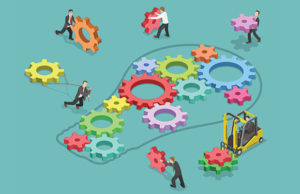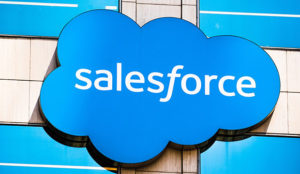Last week Salesforce made it official, coming back to the office will be a fluid thing — and why not? The company has arguably done more in the last year to build systems such as Salesforce Anywhere and Work.com that enable workers — at least a kind of knowledge worker — to work from anywhere.
In the last few weeks, we’ve also seen the debut of a new term; it’s no longer “return to work,” it’s now “return to workplace.”
It makes perfect sense for the company that got started in SFA, a tool to keep remote workers out of the office and in the field. But there’s a whole raft of social problems that might be, if not solved, at least attenuated by throwing in the towel and enabling people to work where they are when it’s most convenient.
The company still hasn’t given up on the high cost of rent in major cities, so employees certainly have permission to go to the office — though finally, mercifully, that no longer implies every day.
Missed and Not Missed
Think of what this means.
Got a sick kid or parent? Just find a way to manage yourself and get your project done between trips to the doctor or making a grilled cheese.
Tired of commuting an hour or more each way every day? What about all the crazies you have on the road? Over and out. This means fewer cars at rush hour, less pollution, and maybe you can buy or lease a less costly car because your time in it is no longer an extension of your leisure activity.
Gonna miss the local airport with its endless security lines and carbohydrate-saturated arcades? Doubtful. How many pounds do you think you’ve lost in the last year avoiding those empty calories?
I miss some of the destinations, though, like San Francisco, even if the pre-COVID city was taking on the character of what Yogi Berra once said, “Nobody goes there anymore. It’s too crowded.”
Still a Dreamforce, OpenWorld or other information jam, there still has appeal. So does Texas — and with the number of companies locating there (hello, Oracle and Zoho), I guess I can trade some San Francisco Dungeness crab for a good steak now and then.
Some people will no doubt tell you they miss their favorite city, the camaraderie, and bustle of the office, running for the train, and all that. It reminds me of some “New Yorker” short stories by John Cheever in the 1950s. But it’s worth noting that back then, most people worked in factories, lunch was packed at home, and the stories of urban work largely described a “Mad Men” culture that thankfully evaporated a long time ago.
So here it is, not the new normal we’ve been anticipating, but what we’ve been doing now normalized. Work from your laptop sitting in/at a (fill in the blank) with good WiFi.
We Are Hardware-Dependent
Actually, normalization is powered by something even more remarkable, a renewed reliance on hardware innovation, although you might not see it yet. The last time hardware was so important, minicomputers and mainframes roamed the earth, every vendor had its own operating system, or even several, and data lived in flat files.
Early computerization was expensive and bulky, but the new technology bestowed such a competitive advantage that adoption resembled a wildfire. Friends who sold minicomputers used to tell me they never made appointments for sales calls; they made appointments to take orders. That sounds almost incredible now, but they drove Corvettes, so…
I don’t know what hardware salespeople drive today, but I know that the advances in remote computing supported by intuitive systems is powered by sticking databases in memory for faster processing and by GPUs, graphical processing units that have been pressed into service for their number crunching abilities.
Increasingly that number crunching on data that’s always in-memory is part of what’s driving our ability to work more fluidly with our machines. Our systems are doing the equivalent of asking if you want fries with that, so we don’t have to.
Turning Point
Historians often pinpoint the beginning of a century as some major event near but not identical to turning over the calendar. For instance, some say the 20th century got started in 1890 with the closing of the American frontier or in 1898 with the American triumph in the Spanish-American War. Others say it started in 1918 when the U.S. proved to be the difference in the First World War that had stalemated in northern France.
In our own time, some have looked at Sept. 11, 2001, as the watershed event that defined the interface of centuries, but others have seen it more as the end of something than as the beginning of something new. I’m in that camp because it now seems that COVID has caused us to rethink numerous aspects of the day-to-day, resulting in a new approach to living.
Less commuting, and more electronic forms of communication, including the newly emerging voice-only social platforms like Clubhouse, provide the nucleus of a solution to old problems like work-life balance, finding connection, pollution, and commitment to family and the local community.
We’re not approaching nirvana, but we’re at last dealing with some of the issues that might have prevented fuller articulation of what’s possible. In a sense, the new normal is still out there, still undefined, but it may be that we’ve ended up aimlessly circling around.
It’s thrilling that whatever is next is brought about by technology, including a big helping of CRM.

























































